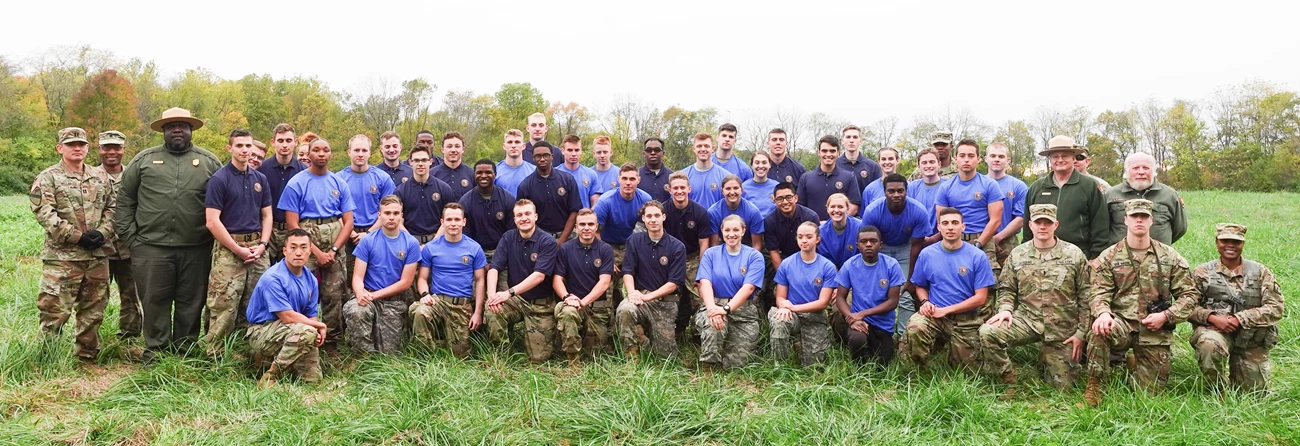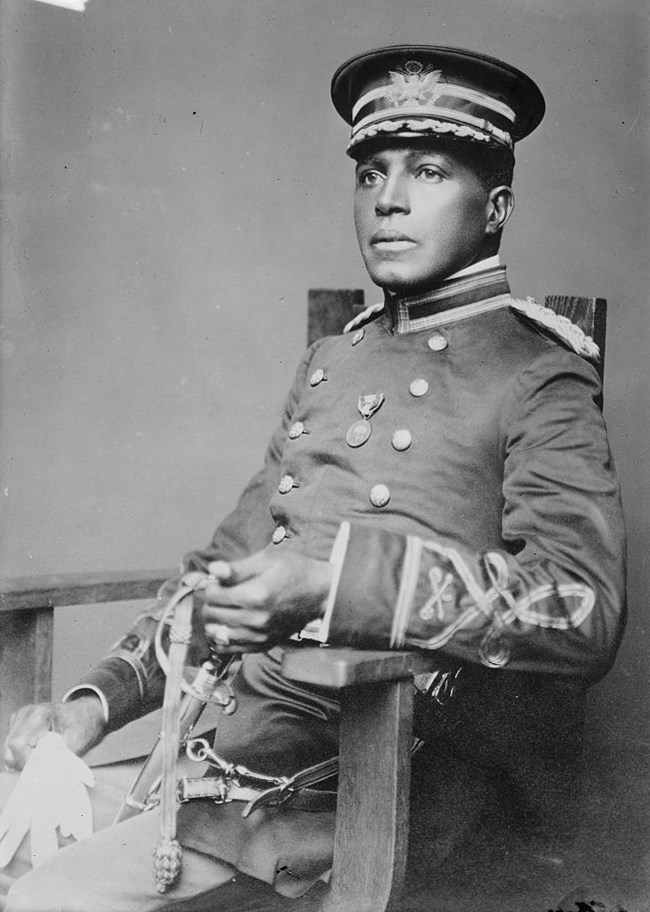Last updated: June 14, 2022
Article
Volunteer Story: Marauder Battalion ROTC

NPS / Andy Danneker

George Grantham Bain Collection, Library of Congress
General Charles Young is renowned for his trail-blazing achievements as the third African American graduate of West Point, a superb leader of the Buffalo Soldiers, and the first African American superintendent of a national park. His role as an educator of military officers in the ground-breaking Marauder Battalion, while less well known, was profoundly influential in the development of the next generation of African American officers in the U.S. military.
Ohio Senators John Sherman and Calvin S. Brice, and Ohio Congressman George W. Hulick urged President Grover Cleveland to establish a military training program at Wilberforce University, the first private, historically black university in the United States. Sherman, Brice, and Hulick, who advocated African American enfranchisement and advancement in the military, recognized that an African American military training program would be advantageous to the U.S. Army. In 1893, President Cleveland authorized the Secretary of War to support their proposition. Subsequently, Wilberforce University became the first educational institution with a Student Army Training Corps for African Americans in 1894.
The training operations began with the appointment of Lieutenant John H. Alexander, the second African American to graduate from West Point, as teaching officer. Unfortunately, Alexander passed away at the age of 30, three months after he was assigned. Lieutenant Charles Young was appointed to fill his role, serving as professor of military science and tactics from 1894 to 1898.
At the outset of Young’s teaching at Wilberforce University, he developed a constructive training regime and curriculum to prepare the students for a successful future in the military. Young used pedagogic techniques similar to those used during his time as a student at West Point. The program he developed included theoretical and practical military instruction using a variety of in-class and hands-on practices. Theoretical training was comprised of mathematics, studying military codes and signals, and English. The practical training included artillery drill, mechanical maneuvers, military signaling, marching, and target practice. Young’s course of study provided the newly established program with a firm foundation.
Officers from the Army Inspector General Office periodically visited Young’s classes for routine progress assessments. After every evaluation, Young received great praise for the program’s accomplishments and success. For example, in May 1897, Captain Cyrus S. Roberts described Young as “conspicuously qualified” for his military professor position during an inspection. Young was determined to continuously improve the program. In doing so, he organized a cadet battalion that modeled a conventional military unit. His teaching strategy was recognized by the U.S. Army as a valuable method for producing candidates qualified to serve as officers in the state militia or National Guard units.
Young's accomplishments in building the nation’s first military training program for African Americans had lasting influence. Today, the cadet battalion is called the Marauder Battalion named for the mascot of the battalion’s home institution, Central State University, and continues to use the techniques Young implemented. It still includes students from Wilberforce University, but also has expanded to students at Cedarville University and Wittenberg University.
According to Robert Stewart, superintendent of the Charles Young Buffalo Soldiers National Monument in Wilberforce, Ohio, “The cadets are some of the most thoughtful and dedicated volunteers that we have at the site. Many of these young men and women have been volunteering at the site for the past four years. As we prepare to say goodbye to these cadets, we are proud that while the Charles Young Buffalo Soldiers National Monument may be losing some of our volunteers, the United States Army will be gaining new officers.”
The National Monument not only preserves the story of General Charles Young but that of the Buffalo Soldiers. We are proud to continue this legacy here at the site and look forward to the next group of cadets who will join us and take part in the work that we do. The cadets who volunteer at Charles Young Buffalo Soldiers National Monument give tours of the site and have participated in every volunteer day, service day, and offsite activity that the park has taken part in. The partnership between the National Monument and the Marauder Battalion ROTC is yet another example of how the work that General Young implemented in 1894 is still being accomplished today.
